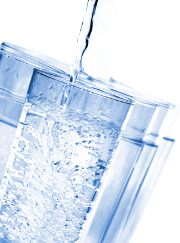5 Important Tips for Exercising in the Heat

Did you know that the most stressful environment to exercise in is a hot and humid environment? The problem is that your body can’t cool down properly when it’s humid. When that happens the chance of heat exhaustion or heat stroke becomes very real. If you’re overweight, unfit or older you may be even more heat-sensitive. And all that heat puts an extra strain on your heart.
If you can’t work out indoors, here are five important tips to follow when exercising in the heat:
Make Sure You’re Well-Hydrated
Seems like such common sense advice but you’d be amazed at how many people wait until they’re extremely thirsty before drinking water. You need to drink water before, during AND after exercising. Here are the basic guidelines for water consumption — you may need more when working out in the heat:
Before Exercise
Drink 17 to 20 oz of water (2 to 2 1/2 cups) (500ml to 600ml) 2 hours before exerciseDuring Exercise
Drink 7 to 10oz of water (1 to 1 1/4 cups) (200ml to 300ml) every 10 to 20 minutes of exercise.After Exercise
Drink 16 to 24oz of water for every pound of body weight lost (2 to 3 cups) (450 to 675ml per .5kg)
Wear Proper Clothing
Wear lightweight, light-colored and loose-fitting clothes when exercising in the heat. Cotton is a great choice to wear because it’s a breathable material. Using lighter colors isn’t a fashion statement — lighter colors, especially white, reflect heat. Avoid synthetic materials as much as possible and never, ever wear rubber or non-permeable clothing.
Reduce Your Exercise Intensity
When it’s hot out, it takes less effort to get your heart rate up. If you work out at your usual intensity, you could find yourself hitting your max heart rate zone. Dial your workouts down a notch and pay attention to your heart rate.
See: Target Heart Rate Zone Calculator
Pick the Right Time to Exercise
Pick a time when the heat and humidity is low, either in the early morning or later in the evening. Avoid exercising outdoors between 10:00AM and 4:00PM.
Keep an Eye on the Heat Index
Check out the NOAA’s heat index chart to avoid the danger zones when you could be more at risk for heat exhaustion or heat stroke. Find the current temperature at the top of the chart and the relative humidity on the side. For example, if it’s 92F with 75% humidity, the heat index — how hot it really feels — is in the danger zone at 116F.

It’s even hotter if you’re in full sunshine!
Stop exercising if you experience any symptoms of heat exhaustion or heat stroke. According to the CDC, muscle cramping can be the first warning sign. Here are more symptoms to watch out for from the CDC — and what to do:
| Heat Exhaustion Symptoms
Heavy sweating |
What You Should Do
Move to a cooler location. |
| Heat Stroke Symptoms
High body temperature (above 103°F) |
What You Should Do
Call 911 immediately — this is a medical emergency. |
When it comes to exercising in the heat, be smart and play it safe. Oh, and don’t forget the sunscreen!
Must Read
Fun Pool Exercise to Burn More Calories
Boost Your Workouts With this Zero-Calorie Nutrient
